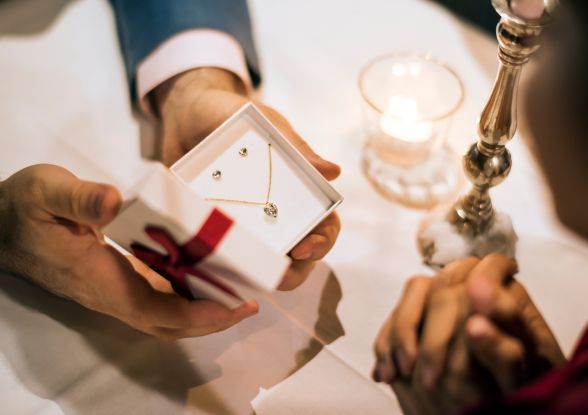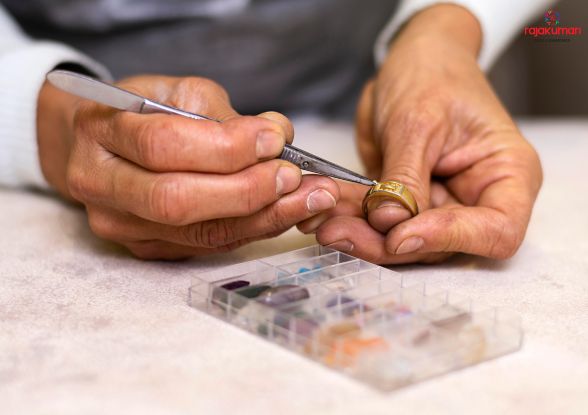Ear Piercing Guidelines for Kids: Safety Tips and Effects
The ear-piercing of children is a centuries-old tradition in India; this is a treasured tradition that has been passed down from generation to generation. Even though you are eagerly anticipating this treasured moment in your baby’s life, there are several things to consider before undergoing the ear-piercing process.
First and foremost, we have to consider the safety of our little ones, along with the potential after-effects of ear piercing and how to treat them. Here is a guideline to follow and refer to if your child is going to go through an ear-piercing ceremony.
What is the safe age for getting ears pierced?
In our culture and in many other cultures around the world, ear piercing is a ceremony for infants. But is it safe? What is the safe age for getting ears pierced? Our first priority here should be the safety of your child, so at least wait until the child is 6 months old or until they get their first set of vaccinations so that we don't have to worry too much about the child catching an infection. But if you’d like your child to have a say on this matter, wait until they are 10 or 11 and ask if they want to get their ear pierced.
The cartilage of our earlobes gets harder as we grow older; thus, piercing will be more painful when we are older. But keep in mind that children’s immune strength is still developing when they are infants, so ear piercing when they are too young poses a threat of infection too.
Ear-piercing methods
There are different methods to get your ears pierced. Some families have trusted individuals who carry out the ear-piercing ceremony safely. Some people go to a professional or an experienced jeweller. Make sure the person who does this is an experienced professional and the equipment used is safe and sterilised.
Ear piercing can be done using piercing guns, needles, and gold wire. There are many concerns regarding the safety of piercing guns, which are the most popular equipment nowadays. So make sure you get your child’s ears pierced in a safe environment with sterilised equipment by a professional.
Safety measures to reduce the risk of infection
- Remember that if you accidentally pierce the cartilage on the earlobe, it takes longer to heal, so avoid piercing the cartilage. Cartilage piercing can also cause conditions like keloids if it is not taken care of.
- Before the ear is pierced, consult a doctor for an expert opinion, especially if your child suffers from allergies, ailments related to the immune system, or any other skin-related diseases.
- Avoid the piercing area getting in contact with hair products, as it can increase the risk of infection.
- Choose earrings that are made of hypoallergenic materials to avoid any chance of an allergic reaction in the pierced area.
- Changing the earrings too soon is not ideal either; let the first earrings stay in place until the area is fully healed.
- Except when cleaning it, avoid touching the newly pierced area with your hand.
- Every day, use a solution of salt water or mild soap to clean the area around the piercings. Avoid using cleaning agents like hydrogen peroxide or cleansers with strong antimicrobial ingredients because they may further harm the skin healing around the piercing.
- Remember to follow the instructions and advice of the piercer.
- Avoid swimming in pools, lakes, or the ocean until the piercing is healed because it can increase the risk of infection.
- Keep the child's hair out of the way because it can get caught in the earrings and pull, which can tear the hole further.
Signs of infection
If the right measures are not taken after the ear piercing, your child can get infections on and around the pierced area. The infection can manifest itself in the form of swelling and redness around the area of the piercing. Children are flighty, so they may feel the need to touch the area when there is itching, and it might cause pain. If there is any kind of discharge coming out of the affected area, it could be indicating pus formation. Consult a doctor to determine whether the symptoms shown are those of an allergy or an infection.
If it's an allergy, we may be able to eliminate it by wearing different earrings. But if the symptoms are confirmed to be those of an infection, the earrings should be removed immediately, and the affected area should be cleaned. The doctor you are consulting will probably prescribe some antibiotics. If the pierced holes are left without earrings for long enough, they will probably close while they are healing. At least wait for another six months before attempting another piercing, and consult a doctor before doing so.
Choosing the earrings
As we have discussed, if the pierced hole is left without anything, it will heal, and the hole will close itself. So an earring is a must, and it shouldn't trigger any infection or allergy. Gold earrings are one of the most popular and suitable first earrings. Gold usually does not create any adverse allergic reactions or irritations on the wearer's skin, so it would be the best metal for your little one to wear for the first time on their ears.
Platinum and silver are other less popular but viable options. In any case, metals that don't have any alloys that can trigger an allergic reaction should be your preference when selecting the first earrings after the piercing. Earrings made of surgical stainless steel are also an option you can consider in this case.
Explore our Kerala Light Weight Jewellery collection and choose the perfect gold and platinum earrings for your little one! Rajakumari Jewellery in Trivandrum features an extensive kids' collection as well as a tremendous wedding collection. Here, you will find exquisite designs and unique pieces that perfectly capture your vision. Visit our showrooms to experience personalised service and discover a whole new world of magnificent jewels!
.jpg)

.jpg)
.jpg)
.jpg)
